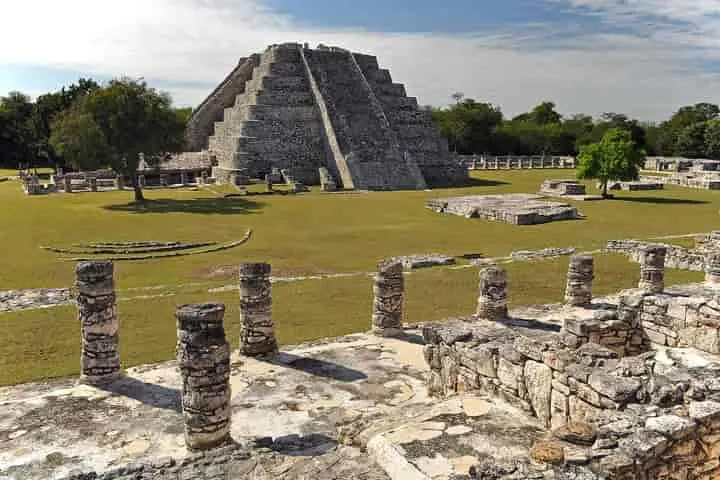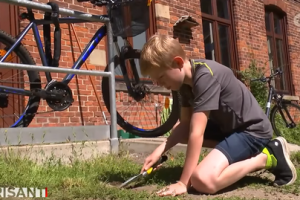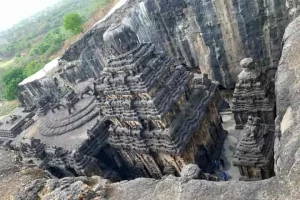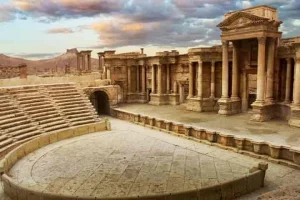History has been a teacher since time immemorial and those who choose not to learn from it are doomed to repeat it! This is the crux as per a report in sciencealet.com of a new study in which researchers have studied 800 years of the history of Maya civilisation – which stretched from north Mexico to Central America – to conclude that Mayapan, the capital of this great culture, faced collapse due to drought.
The dry spell caused civil conflict and unrest which as per the scientists brought about political disintegration. This made the populace move to settlements which were smaller and also safer.
This momentous event while providing a valuable insight into the history of this developed ancient civilisation and its people also serves as a forewarning for the present-day mankind. Changes in the climate and shifts can exert severe pressure on even the most prosperous and well-established civilizations.
In their paper, the scientists wrote: "Multiple data sources indicate that civil conflict increased significantly, and generalized linear modelling correlates strife in the city with drought conditions between 1400 and 1450 CE. We argue that prolonged drought escalated rival factional tensions, but subsequent adaptations reveal region-scale resiliency, ensuring that Maya political and economic structures endured until European contact in the early 16th Century CE."
The scientists had plethora of historical records and data to study and analyse. This population change, climate conditions and contemporary diets. For their study, the researchers used a new analysis of human remains to find traumatic injuries that suggest conflict.
The Templo Redondo with a Mayan carving in the foreground
The close study of the records found correlations between increase in rainfall and increase in the number of people in the area and also between decrease in rainfall subsequently and the spurt in conflicts. The dry conditions from 1400 to 1450 CE, is what most likely caused the desertion of Mayapan by people, the scientists noted.
Scarcity of water affected agricultural and food production and also trade routes, causing lot of pressure and strain on the residents of Mayapan. With food scarcity becoming worse, the situation became perilous with people dying or dispersing to other places.
Before the evacuation from the city a huge mass grave was dug which according to the scientists probably includes the bodies of the family members of the Cocoms, the heads of State. This clearly indicates the social unrest and violent and bloody end to the tussle and conflict between the rival groups.
Writing about this aspect, the researchers wrote; "Our findings support Mayapan's storied institutional collapse between 1441 and 1461 CE, a consequence of civil conflict driven by political rivalry and ambition, which was embedded in the social memory of Yucatecan peoples whose testimonies entered the written record of the early Colonial Period.”
How human beings respond and behave in adverse conditions due to environmental changes like famine and drought is complex. It differs from region to region, from one era to another. The reason being that there are several factors that come to play in deciding how a community behaves in such situations.
The Mayapan excavations
In case of the Mayans, the shift by the people to other areas and regions of the Yucatan Peninsula which included politically independent communities and flourishing coastal towns, helped the Maya culture to continue to thrive after the fall of Mayapan.
Historians do not find any proof of strife between these regions before the advent of the Spanish rulers.
This the scientists observed is a proof of a "resilient system of human-environmental adaptations”. Yet, they point out that such adaptations can only help to an extent as these same areas are now confronted along with others parts of the planet with climate crisis.
The scientists making a pertinent observation commented: "Archaeological and historical records are well suited for examining past societal effects of climate crises over long-term cycles. The Maya region offers the breadth and depth of archaeological, historical, and climate records essential for studying correlations between social change and fluctuating climate conditions."
Details of this research has appeared in Nature Communications, a peer-reviewed, open access journal.
Also read: Did mass migration turn Mayan people into maize eaters 5600 years ago?




















